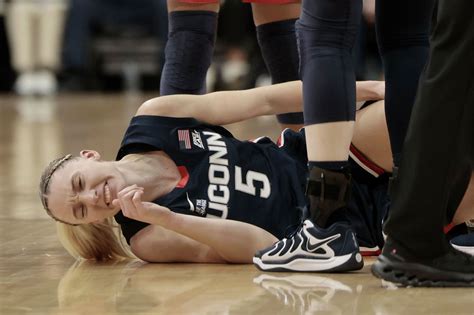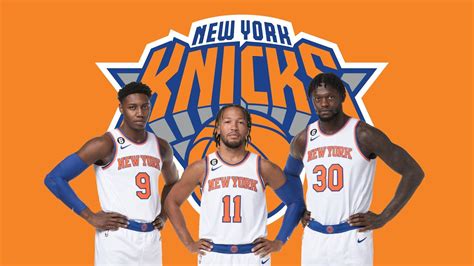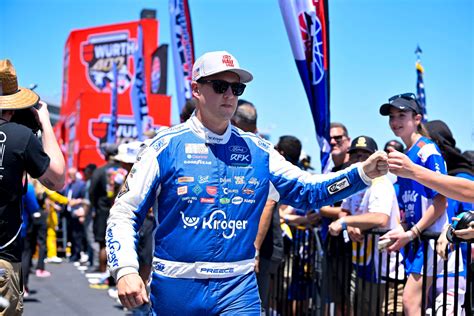
Paige Bueckers, the UConn Huskies’ star guard, sparked renewed injury concerns during a recent scrimmage, raising alarms about her readiness for the upcoming WNBA draft and professional career. The incident occurred during a team practice, and while the exact nature and severity of the injury remain undisclosed, the visible distress and subsequent attention from medical staff have fueled speculation and worry among fans and analysts.
Bueckers, who has already faced significant setbacks due to a previous ACL tear that sidelined her for the entire 2022-23 season, is considered a top prospect for the 2025 WNBA draft. Any further injury could potentially impact her draft stock and long-term career prospects. Details surrounding the recent incident are scarce, but the palpable concern expressed by those present at the scrimmage underscores the gravity of the situation. The incident, described as “unacceptable” in some circles, has led to increased scrutiny of UConn’s training practices and the overall physical toll on collegiate athletes.
The timing of this potential setback is particularly concerning, given Bueckers’ diligent efforts to return to peak form following her ACL injury. Her comeback season saw her not only regain her previous level of play but also demonstrate enhanced leadership and maturity on the court. This latest development introduces uncertainty and anxiety, highlighting the precarious nature of an athlete’s career and the constant threat of injury.
The UConn women’s basketball program has not yet released an official statement regarding the incident, leaving fans and media to rely on unofficial reports and observations. This lack of transparency has only amplified concerns and fueled speculation about the severity of the injury and its potential impact on Bueckers’ future. The WNBA community is keenly awaiting further updates, as Bueckers represents a significant talent and potential star for the league.
Background and Context
Paige Bueckers’ journey in collegiate basketball has been marked by both exceptional achievements and significant challenges. As a freshman, she burst onto the scene, earning national player of the year honors and leading UConn to the Final Four. Her dynamic playmaking, scoring ability, and court vision quickly established her as one of the most exciting talents in the sport.
However, her career trajectory was abruptly halted when she suffered a torn ACL in her left knee during an offseason pickup game in the summer of 2022. This injury required reconstructive surgery and a lengthy rehabilitation process, forcing her to miss the entire 2022-23 season. The recovery was arduous, both physically and mentally, as Bueckers worked tirelessly to regain her strength, agility, and confidence.
Upon her return in the 2023-24 season, Bueckers showcased remarkable resilience and determination. Despite the lingering effects of her injury, she managed to elevate her game, averaging impressive stats and leading UConn to another deep tournament run. More importantly, she demonstrated a newfound maturity and leadership, becoming a vocal presence on and off the court.
Bueckers’ decision to return for her senior year at UConn was met with widespread praise, as it allowed her to further refine her skills, solidify her legacy, and prepare for the rigors of the WNBA. She entered the season as a consensus All-American and a leading candidate for national player of the year honors. However, this recent injury scare casts a shadow over her future prospects and raises questions about her long-term health and durability.
The UConn women’s basketball program, under the leadership of legendary coach Geno Auriemma, has a long and storied history of producing WNBA stars. Players like Diana Taurasi, Sue Bird, and Maya Moore have all honed their skills at UConn before going on to dominate the professional ranks. Bueckers is widely expected to follow in their footsteps, with many scouts projecting her as a potential No. 1 overall pick in the 2025 WNBA draft.
Impact and Implications
The potential impact of this injury extends beyond Bueckers’ individual career. It also raises broader questions about the physical demands placed on collegiate athletes and the adequacy of injury prevention and management protocols. The incident has sparked renewed debate about the need for greater emphasis on player safety and well-being, particularly in high-profile sports programs.
“It’s unacceptable,” said one source close to the program, highlighting the frustration and concern surrounding the situation. This sentiment reflects a growing awareness of the potential risks associated with pushing athletes too hard, especially after they have already suffered significant injuries. The pressure to perform at a high level, combined with the intense training and competition schedules, can take a toll on athletes’ bodies and increase their vulnerability to further injury.
The WNBA community is also closely monitoring the situation, as Bueckers represents a significant talent and potential draw for the league. Her presence would undoubtedly boost attendance, viewership, and overall interest in the WNBA, which is constantly seeking to expand its reach and attract new fans. However, her long-term health and availability are crucial factors in determining her ultimate impact on the league.
Expert Analysis
Several sports medicine experts have weighed in on the situation, emphasizing the importance of a thorough evaluation and comprehensive rehabilitation plan. “ACL injuries are notoriously difficult to recover from, and athletes often face a higher risk of re-injury,” said Dr. James Andrews, a renowned orthopedic surgeon. “It’s crucial to ensure that the knee is fully healed and that the athlete has regained full strength, flexibility, and proprioception before returning to competitive play.”
Other experts have highlighted the psychological impact of injuries on athletes. “The mental aspect of recovery is just as important as the physical aspect,” said Dr. Lisa Miller, a sports psychologist. “Athletes often experience anxiety, fear, and self-doubt after an injury, which can hinder their performance and increase their risk of re-injury. It’s essential to provide them with the necessary psychological support to help them cope with these challenges.”
The absence of official information from the UConn women’s basketball program has also drawn criticism. “Transparency is crucial in these situations,” said John Walters, a sports journalist. “Fans and media have a right to know the basic facts about the injury and the expected recovery timeline. Lack of transparency only fuels speculation and mistrust.”
Possible Scenarios
Several possible scenarios could unfold in the coming days and weeks. The most optimistic scenario is that the injury is relatively minor and that Bueckers will be able to return to practice soon after a period of rest and rehabilitation. This would allow her to continue preparing for the upcoming season and maintain her status as a top WNBA prospect.
A more concerning scenario is that the injury is more serious than initially anticipated and requires further medical intervention, such as surgery. This would likely sideline her for an extended period and potentially jeopardize her chances of playing in the upcoming season. It could also impact her draft stock and long-term career prospects.
Another possibility is that Bueckers decides to prioritize her long-term health and withdraw from the WNBA draft to focus on further rehabilitation and training. This would allow her to fully recover from her injuries and enter the draft in a later year, when she is better prepared to compete at the professional level.
Team Dynamics and Morale
The potential absence of Paige Bueckers could also have a significant impact on the UConn women’s basketball team’s dynamics and morale. As the team’s leader and star player, Bueckers plays a crucial role in both on-court performance and off-court cohesion. Her absence could create a void in the team’s leadership structure and affect the team’s overall confidence and competitiveness.
Coach Geno Auriemma will need to find ways to fill the leadership gap and ensure that the team remains focused and motivated. This could involve giving other players more prominent roles and empowering them to step up and take on greater responsibility. It could also involve adjusting the team’s offensive and defensive strategies to compensate for Bueckers’ absence.
The team’s response to this adversity will be a key indicator of its resilience and character. If the players are able to rally together and support each other, they can overcome this challenge and continue to compete at a high level. However, if the team becomes discouraged and divided, it could struggle to maintain its winning ways.
FAQ Section
1. What happened to Paige Bueckers?
During a recent UConn women’s basketball scrimmage, Paige Bueckers apparently suffered an injury. The specific nature and severity of the injury have not been officially disclosed by the program, but reports indicate visible distress and medical attention, sparking concerns about her health and future availability.
2. What is the extent of Paige Bueckers’ injury?
The exact extent of Bueckers’ injury is currently unknown. The UConn women’s basketball program has not released an official statement providing details about the injury’s nature or severity. This lack of transparency has led to speculation and anxiety among fans and media.
3. How might this injury affect her WNBA draft prospects?
Any significant injury could potentially impact Bueckers’ WNBA draft stock. Given her previous ACL tear and recovery, scouts will be particularly concerned about her long-term durability. A serious injury could cause her to drop in the draft or even delay her entry into the WNBA. However, a minor injury with a quick recovery would likely have minimal impact.
4. What has the UConn women’s basketball program said about the incident?
As of the latest reports, the UConn women’s basketball program has not issued an official statement regarding the incident. This lack of communication has contributed to the uncertainty and speculation surrounding Bueckers’ condition. Fans and media are awaiting an official update from the program.
5. What are the potential implications for the UConn team if Bueckers is sidelined?
If Bueckers is sidelined for an extended period, it could significantly impact the UConn women’s basketball team’s performance and dynamics. As the team’s leader and star player, her absence would create a void in leadership and scoring. Coach Geno Auriemma would need to adjust the team’s strategies and rely on other players to step up and fill her role.
Deeper Dive into the ACL Injury and Recovery
Paige Bueckers’ previous ACL injury serves as a critical backdrop to the current concerns. An ACL tear is one of the most common and debilitating injuries in sports, particularly for athletes who rely on agility, speed, and sudden changes in direction. The anterior cruciate ligament (ACL) is a crucial ligament in the knee that provides stability and prevents excessive forward movement of the tibia (shinbone) relative to the femur (thighbone).
When an ACL tears, it often requires reconstructive surgery to repair or replace the damaged ligament. The surgery typically involves using a graft, which can be taken from the patient’s own body (autograft) or from a deceased donor (allograft), to create a new ACL. The recovery process is lengthy and demanding, typically lasting anywhere from six to nine months or even longer.
During the rehabilitation process, athletes must gradually regain their range of motion, strength, and stability in the injured knee. This involves a series of exercises, including weightlifting, balance training, and agility drills. Physical therapists play a crucial role in guiding athletes through this process and ensuring that they progress at a safe and appropriate pace.
One of the biggest challenges in ACL recovery is regaining the athlete’s confidence in their knee. Many athletes experience anxiety and fear about re-injuring themselves, which can hinder their performance and increase their risk of re-injury. Sports psychologists can help athletes address these psychological barriers and develop coping strategies to manage their fears.
Even after a successful recovery, athletes who have suffered an ACL tear face a higher risk of re-injury compared to those who have never experienced such an injury. This is due to a variety of factors, including residual weakness in the knee, altered biomechanics, and psychological factors.
Given Bueckers’ history of an ACL tear, the current injury scare is particularly concerning. Any further damage to her knee could potentially derail her career and prevent her from reaching her full potential. It is therefore crucial that she receives the best possible medical care and rehabilitation to ensure that she can return to the court safely and confidently.
The Role of UConn’s Training Staff and Protocols
The incident has also raised questions about the role of UConn’s training staff and the protocols in place to prevent and manage injuries. The UConn women’s basketball program is known for its rigorous training regimen, which is designed to prepare players for the demands of high-level competition. However, some critics argue that the program may be pushing players too hard, especially after they have already suffered significant injuries.
It is essential that UConn’s training staff carefully monitor players’ physical condition and adjust the training load accordingly. This involves conducting regular assessments of strength, flexibility, and fatigue levels, as well as providing adequate rest and recovery time. It also involves implementing injury prevention programs that focus on strengthening muscles around the knee, improving biomechanics, and teaching athletes proper landing techniques.
In addition, it is crucial that UConn’s training staff have a clear and effective system for managing injuries when they occur. This involves providing prompt medical attention, conducting thorough evaluations, and developing individualized rehabilitation plans. It also involves communicating effectively with athletes, coaches, and medical professionals to ensure that everyone is on the same page.
The UConn women’s basketball program has a responsibility to prioritize the health and well-being of its athletes. This means investing in the best possible medical care, implementing comprehensive injury prevention programs, and creating a culture of transparency and communication. By doing so, the program can help to minimize the risk of injury and ensure that its athletes can reach their full potential.
The Future of Women’s Basketball and the WNBA
Paige Bueckers represents a bright future for women’s basketball and the WNBA. Her exceptional talent, charismatic personality, and dedication to the sport have made her a role model for young athletes around the world. Her presence in the WNBA would undoubtedly attract new fans and boost the league’s profile.
The WNBA is currently experiencing a period of growth and increased popularity. Viewership is up, attendance is rising, and more and more young girls are playing basketball. The league is also attracting more corporate sponsorships and media attention.
However, the WNBA still faces significant challenges. The league’s salaries are relatively low compared to other professional sports leagues, and many players have to supplement their income by playing overseas during the offseason. The league also struggles to attract consistent media coverage and mainstream attention.
Despite these challenges, the WNBA has a bright future. The league is committed to growing the game and providing opportunities for talented female athletes. Players like Paige Bueckers can help to elevate the league’s profile and attract new fans.
The WNBA is also working to improve its marketing and branding efforts. The league is focusing on highlighting the personalities and stories of its players, as well as showcasing the excitement and athleticism of the game. The league is also investing in digital media and social media to reach a wider audience.
The future of women’s basketball is bright, and Paige Bueckers is poised to play a major role in shaping that future. Her talent, dedication, and leadership will inspire young athletes for years to come. The WNBA is fortunate to have her, and the league will undoubtedly benefit from her presence.
The Broader Context of Athlete Health and Well-being
The Paige Bueckers situation also highlights the broader context of athlete health and well-being in modern sports. The pressures on athletes at all levels, from youth leagues to professional teams, have intensified in recent years. Athletes are expected to train harder, compete more often, and perform at a higher level than ever before.
This increased pressure can take a toll on athletes’ physical and mental health. Athletes are at risk of overuse injuries, burnout, and mental health issues such as anxiety and depression. It is essential that athletes, coaches, and parents prioritize athlete health and well-being above all else.
This means providing athletes with adequate rest and recovery time, ensuring that they have access to quality medical care, and creating a supportive and positive training environment. It also means teaching athletes how to recognize the signs and symptoms of overtraining and mental health issues, and encouraging them to seek help when they need it.
The sports community has a responsibility to create a culture that values athlete health and well-being. This means challenging the win-at-all-costs mentality and promoting a more balanced approach to sports participation. It also means advocating for policies that protect athletes’ rights and ensure that they are treated fairly and with respect.
The health and well-being of athletes should be the top priority at all levels of sport. By prioritizing athlete health, we can create a more positive and sustainable environment for athletes to thrive and reach their full potential.
The Mental Game of Recovery
The psychological aspect of recovering from an injury, as highlighted by Dr. Lisa Miller, is an area that deserves significant attention. Athletes often face a multitude of mental challenges during the recovery process, including:
-
Fear of Re-injury: This is perhaps the most common and debilitating fear. Athletes may hesitate to push themselves, alter their movements, or avoid certain activities altogether, hindering their rehabilitation and performance.
-
Loss of Identity: For many athletes, their sport is a significant part of their identity. Being sidelined can lead to feelings of isolation, depression, and a loss of purpose.
-
Frustration and Impatience: The recovery process can be slow and frustrating, and athletes may struggle with the lack of control over their progress. Impatience can lead to pushing too hard, potentially causing setbacks.
-
Anxiety and Stress: The uncertainty surrounding the recovery timeline and the potential impact on their career can cause significant anxiety and stress.
-
Self-Doubt: Athletes may question their abilities, their dedication, and their future in the sport.
Sports psychologists can provide athletes with tools and strategies to cope with these challenges, including:
-
Goal Setting: Setting realistic and achievable goals can provide a sense of direction and motivation.
-
Visualization: Mental imagery can help athletes practice skills, build confidence, and reduce anxiety.
-
Positive Self-Talk: Encouraging athletes to focus on their strengths and accomplishments can boost their self-esteem and motivation.
-
Mindfulness and Relaxation Techniques: These techniques can help athletes manage stress, reduce anxiety, and improve focus.
-
Cognitive Restructuring: Identifying and challenging negative thoughts can help athletes develop a more positive and realistic outlook.
Conclusion
The recent injury scare involving Paige Bueckers has sent ripples of concern throughout the basketball community. While the exact nature and severity of the injury remain unknown, the incident underscores the precarious nature of an athlete’s career and the constant threat of injury. It also raises broader questions about the physical demands placed on collegiate athletes and the adequacy of injury prevention and management protocols.
As Bueckers and the UConn women’s basketball program navigate this challenging situation, it is essential that they prioritize her health and well-being above all else. This means providing her with the best possible medical care, implementing a comprehensive rehabilitation plan, and creating a supportive and positive environment.
The basketball community will be eagerly awaiting further updates on Bueckers’ condition. Her talent, dedication, and leadership have made her a role model for young athletes around the world, and her presence in the WNBA would undoubtedly be a boost for the league. However, her long-term health and well-being are paramount, and it is crucial that she is given the time and resources she needs to recover fully and safely.









